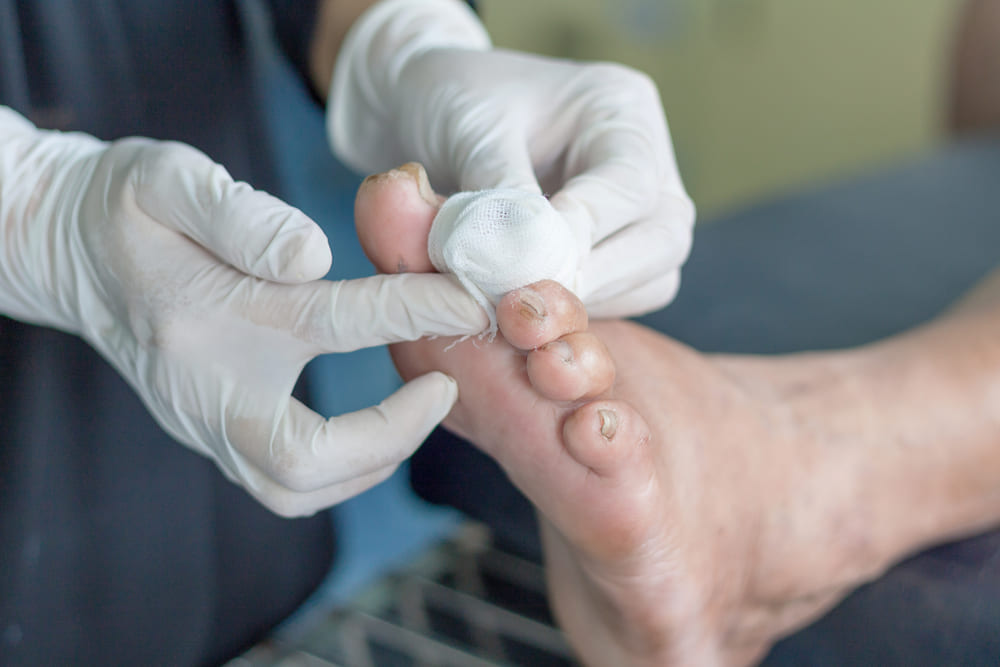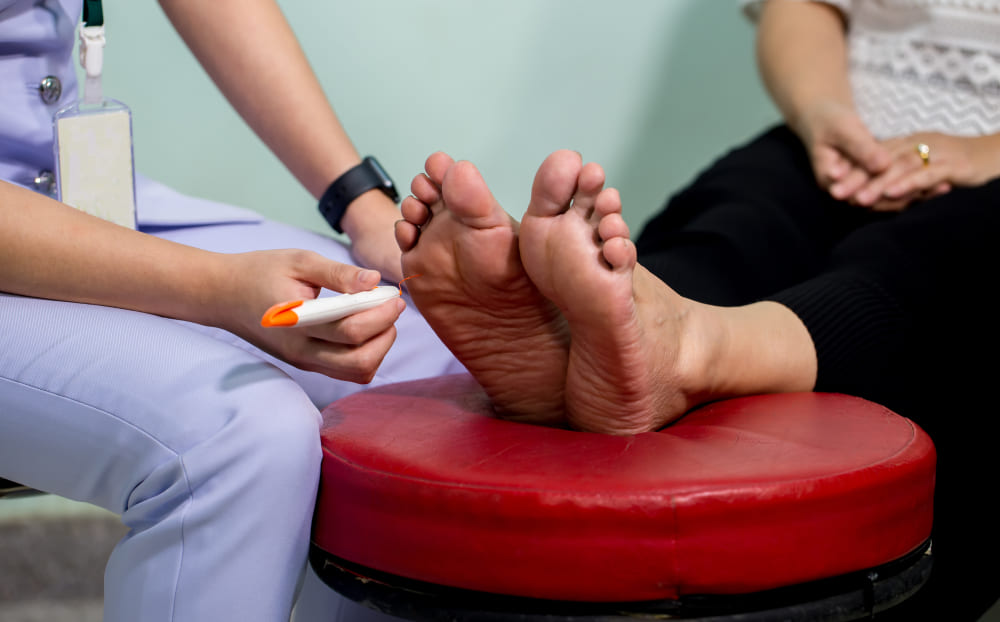


Diabetes significantly impacts health beyond its direct effects on blood sugar levels, particularly influencing how our bodies heal wounds and maintain skin health.
High blood sugar can slow down the body’s ability to repair itself, making it more difficult for wounds to heal and increasing the chance of infection. This isn’t just a slow-down in healing – it can lead to serious health risks, such as chronic wounds and severe infections that are harder to treat.
Knowing how diabetes affects these processes is essential for those managing the illness. It can also be useful to anyone interested in how our bodies work and how conditions like diabetes can alter this balance.
This blog post explores how elevated blood sugar levels can disrupt wound healing and skin health – whether for personal knowledge, caring for someone with diabetes, or simply understanding the broader health implications of this common condition.
Let’s explore five important aspects that illustrate the depth of diabetes’ impact on wound healing and skin health, shedding light on why awareness and proactive management are essential.
Being aware of how blood flow is affected by high blood sugar levels reveals critical insights into the healing process, especially for wounds.
When blood vessels narrow and harden (often caused by high glucose levels), the circulation to body parts, notably the extremities, becomes restricted. This impaired circulation means that wounds heal more slowly because they’re not receiving the nutrients and oxygen they desperately need.
According to Zawn Villines, writing in Medical News Today, “Uncontrolled diabetes may affect circulation, causing blood to move more slowly, which makes it more difficult for the body to deliver nutrients to wounds. As a result, the injuries heal slowly or may not heal at all.”
Additionally, the body’s ability to send immune cells to fight off infections at the wound site is compromised, raising the risk of further complications.
Nerve damage, commonly resulting from sustained high blood sugar levels, significantly impacts our body’s ability to get easily injured, especially in the feet and legs.
When nerves are damaged, the reduced sensation can mean that injuries may happen and go unnoticed and unaddressed, leading to a delay in treatment and an increased risk of complications. The absence of pain, a crucial body alert system, allows minor injuries to escalate unnoticed into more severe conditions or infections.
According to Jedha Dening, writing in Healthline, “Neuropathy is particularly common in the hands and feet. When it happens, you may not be able to feel wounds when they occur. This is one major reason why foot wounds tend to be more common in people with diabetes.”
This knowledge highlights the critical importance of regular monitoring and care for areas, especially around the legs and feet, prone to reduced sensation, emphasizing the need for preventive measures to protect against injury.

Recognizing the effect of high blood sugar on the immune system reveals why managing glucose levels is crucial for everyone, not just those with diabetes.
A raised glucose level can weaken the body’s ability to combat infections, transforming even minor wounds into potential entry points for bacteria. This compromised immune function increases the risk of infection and extends the inflammation phase of wound healing.
According to Sharon Reynolds, writing in National Institutes of Health, “Diabetes can also reduce the ability of the skin to heal itself. Even small cuts on the feet can develop into diabetic foot ulcers—chronic, non-healing wounds that are vulnerable to infection.
Diabetic foot ulcers are a major cause of lower limb amputations and disability in people with diabetes.”
As the natural progression towards healing becomes more complex, experts highlight the need to preserve a robust immune response in maintaining health.
The health of our skin is closely tied to the condition of underlying blood vessels and nerves.
When these are damaged, it can lead to noticeable changes in the skin, such as increased dryness, cracking, and decreased sweating. These changes affect the skin’s appearance and, more critically, its function as a protective barrier.
According to Vanessa Goulding, writing in The Diabetic Foot Journal, “The skin of people with diabetes has greater stiffness and less flexibility, which is thought to render it more prone to injury. It has been suggested that these skin changes are the result of imbalances in collagen synthesis and degradation. Wounds in these patients demonstrate a prolonged inflammatory phase, causing a delay in the formation of granulation tissue and, subsequently, reducing the wound tensile strength.”
The risk of injuries and infections rises with compromised skin integrity, and the skin’s capacity for self-repair diminishes. This can result in chronic ulcers, often seen in areas under regular pressure, like the feet.

The interconnections between reduced blood flow, nerve damage, weakened immune responses, and skin health changes significantly increase the risk, particularly in wounds.
This heightened susceptibility means that injuries not only become infected more easily but also can escalate in severity more rapidly than they might in individuals without these underlying issues. Such situations can lead to serious health complications, emphasizing the necessity of preventative care and early intervention.
According to Health Partners, “Diabetic sores and wounds can’t heal when they’re infected. So, talk to your doctor if your wound or the surrounding skin feels tender, painful or hot to the touch, oozes pus or liquid, is unusual in color or dark at the edges, and smells badly.”
This illustrates the need for optimal health practices to support blood circulation, nerve health, immune function, and skin integrity.
Proactive heart care is crucial for everyone, particularly when considering the long-term effects of high blood sugar, elevated blood pressure, and lipid imbalances on cardiovascular health.
These factors can significantly strain the heart and circulatory system, underscoring the need for measures that support heart health. When people have a combination of conditions such as obesity, cholesterol, diabetes, and hypertension – along with other hereditary factors – these ailments can all have a multiplicative impact on the heart.
Regular cardiovascular screenings, a diet rich in fiber and low in saturated fats, consistent physical activity, and effective management of blood sugar levels are critical strategies in this regard. Adopting such practices helps reduce the risk of heart-related issues and promotes overall health and well-being.
Taking a comprehensive approach to wellness of all contributory ailments and the heart shows a good understanding of the interconnectedness of various aspects of health. It is essential to think of heart care as part of a holistic health management plan, whatever other conditions exist in the body.
Gaining insights into the broader impacts of diabetic conditions that affect wound healing and skin health underscores the importance of a comprehensive approach to wellness.
Due to the potential challenges, such as reduced blood circulation, nerve sensitivity loss, weakened immune function, skin condition changes, and a heightened risk of infection, everyone should adopt proactive measures to safeguard their health.
Knowledge about health and the heart not only benefits us after ailments happen, but it makes us stay alert if we know what to expect and thereby protect ourselves. Stay heart-healthy.